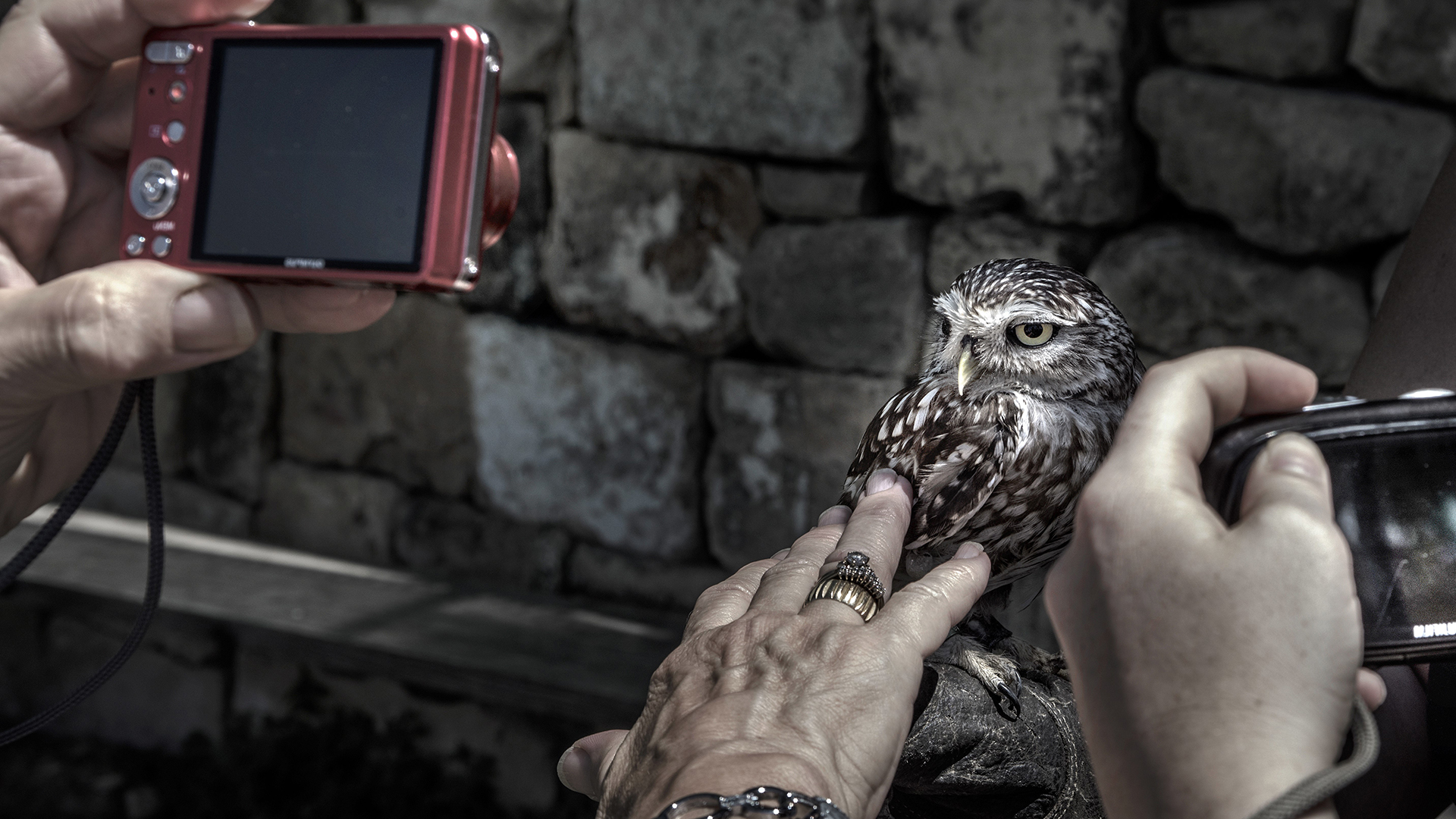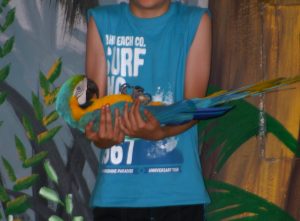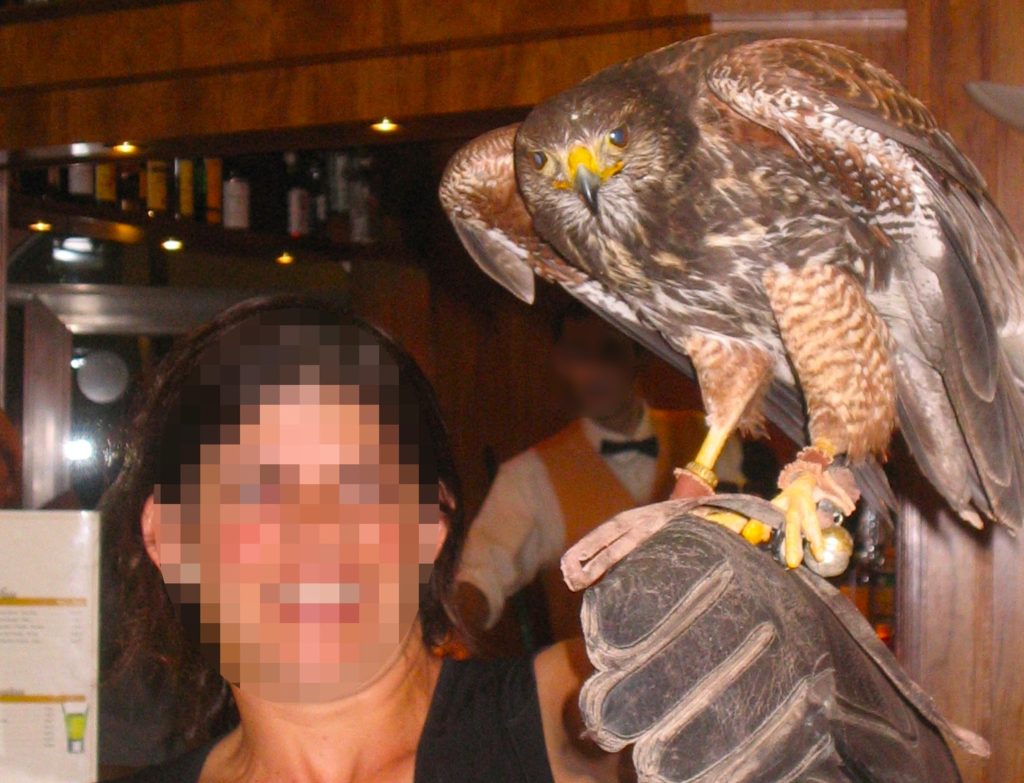
Animal Encounters and Interaction: Birds
Born Free strongly advises members of the public not to participate in close contact activities with captive birds.

Captive birds are used for encounters, interaction and as photographic props. Common species used are parrots, toucans, owls and birds of prey. There are many animal welfare and public health and safety concerns involved with this close contact.
Birds used for handling and as photographic props may not be kept in conditions best suited to their welfare and needs. Many captive birds are particularly prone to stress and may develop abnormal behaviours such as feather-plucking.
Birds may have their wings clipped (the trimming of primary flight feathers) or they may be pinioned (the surgical removal of the end joint of the wing) to prevent flight.
The inability to fly, along with the close proximity to humans and loud noises, can be extremely distressing for the birds involved. Agitated birds may cause injury to both themselves and humans.
Captive owls and birds of prey may be used in falconry flight displays where visitors can also touch and hold the birds.
With razor-sharp talons and beaks, these birds have the potential to cause significant injury. Birds may be kept hungry to ensure they return to their handler. Frequently, they are tethered around one leg, and when not in use, they may be tied to a bow (an arched perch) or confined to small, restricted areas.
Birds may harbour bacterial and fungal diseases. There are also many strains of avian flu transmissible to humans.

